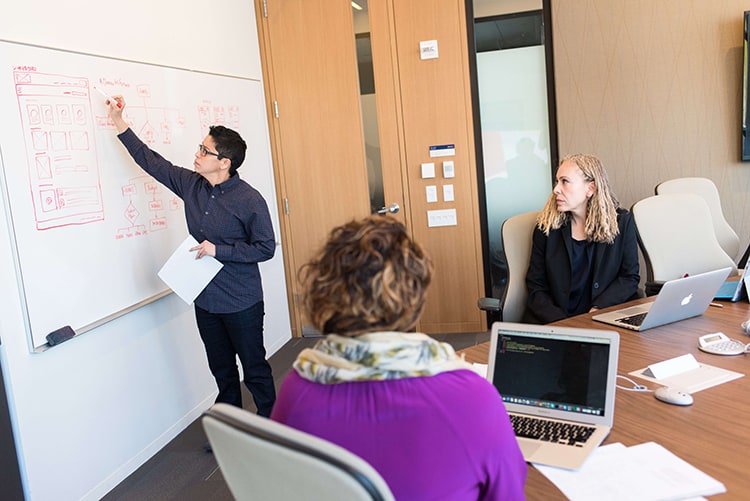Making Soft Skills Learning More User-Centric Through Digital Transformation
Employability is key in a fast-changing world. In the workplace, learners are motivated to keep their skills up-to-date so that they don’t fall behind. If companies are to retain their best-performing employees, it is vital to offer the best learning and development opportunities. Keep in mind that there’s also a growing awareness within the workforce of the need to be able to demonstrate soft skills such as leadership, negotiation, and language and communication skills in order to drive career progression.
What workers want
Increasingly, learners want to take control of their own learning. This stems partly from the fact that we all carry mobile devices and expect to be able to look up information on a whim. The latest digital and intelligent technologies can help transfer this self-directed approach to learning to the workplace. Learning professionals are now in a position that allows them to personalize soft skills learning content for each learner and enable access to lessons at any point during the workday.
Many of today’s job roles did not exist 10 years ago, and this rate of transformation is likely to continue. However, according to Deloitte, employees only have 1% of their working day available to devote towards learning and development activities. To make that 1% count, training delivery must be on demand, providing the learner with brief and relevant learning content.

Bring in design thinking
This is where design thinking comes in. Design thinking is the latest incarnation of the discipline of user experience (UX). UX experts have traditionally focused on making the process of using a product, software application or app, as easy and as pleasurable as possible. In the learning environment, that translates not only into making the learning journey work well but also into making the initial learner interface accessible and engaging.
While the traditional L&D approach is focused on developing and reviewing training content that solves well-defined problems, with design thinking the learning pathway is front and central. Design thinking does not focus on learning content outcomes. It is creative and analytic, allowing for collaboration and experimentation along the learning journey.
Now let’s talk about how the design thinking approach can help make best use of digital technologies to improve learner experience.
Download our whitepaper and learn how design thinking applies to HR.
Use intelligent software to deliver personalized content
Intelligent software can help predict the type of content that is relevant to individuals. It can assess their learning speed and adapt to that. It can act on metrics such as how often and how frequently each learner logs into the learning system and how long they spend learning each time. All this data can help artificial intelligence (AI)-powered learning systems to be more responsive to learning needs. AI can drive chatbots that act as virtual coaches to support learning. In addition, the latest intelligent software can measure ‘virality,’ or how much employees are talking about the learning content, how much they are sharing it and collaborating on it and even what they think of it. Collaborative learning is vital when it comes to the development of language and communication skills.
Put ongoing curation at the heart of learning pathways
The L&D function should not be about providing a one-off learning solution, then measuring how effective it is. It is important to encourage a continuous process of content creation, enabling learners to suggest and share new content that supports their learning. Only 13% of companies curate learning content, but 51% of high-performing companies curate content.
Learn from marketers
Marketing professionals first develop ‘personas,’ or profiles representative of typical customers, before developing marketing activities to better appeal to and interest those groups of potential customers. Learner personas might include demographic information such as their age and employment history, educational background and training completed, the challenges they face at work and where they look for information that will support them at work. Aim to develop between three and five personas to drive cohorts of learners towards the learning content in the first place. The primary goal is to make workers feel that learning is valuable to them and that they actively seek it out and are engaged by it. Then use the learning personas to develop different types of learning delivery – for example, mobile-based learning content or face-to-face mentoring might suit different groups of learners.

Technology is on your side
Emerging digital technology is making it easier than ever before to use design thinking to create multiple versions of the same learning content to meet the needs of different learners. The initial visual appeal of learning content can make all the difference as to whether learners consume it effectively or not. Use of graphics and color can help to make the content more relatable, while micro-learning delivered in regular, just-in-time bite-sized chunks makes it more accessible and less intimidating.
There is no doubt that design thinking, and incorporating the latest digital technologies, goes a long way to help foster the type of learning communities that are crucial when embedding soft skills such as language and communication skills. It is often these very skills that open doors to business success.
All of these points and more were discussed in our recent joint webinar with Docebo, titled How Digital Transformation Enables a User-Centric Approach to L&D. In case you missed it, you can access the webinar recording here.
